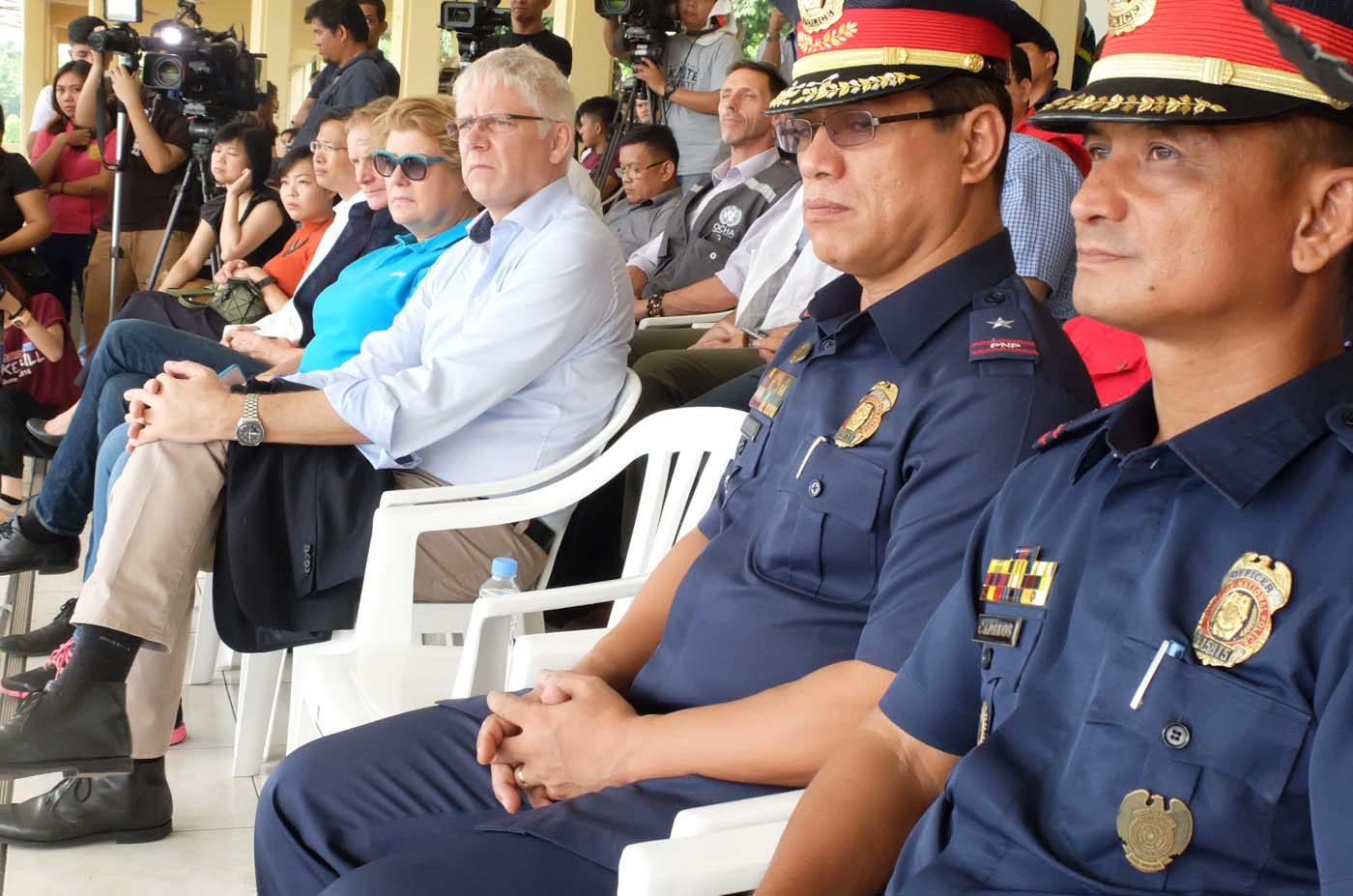SUMMARY
This is AI generated summarization, which may have errors. For context, always refer to the full article.

MANILA, Philippines – Various United Nations (UN) and humanitarian agencies participated in the nationwide earthquake drill on Wednesday, June 22, highlighting the need for close coordination between government and response groups during disasters.
Minutes after the siren rang at 9 AM, government officials, together with members of UN agencies, convened in a council meeting at Camp Aguinaldo to assess the projected damage of the simulated earthquake and draft their response and rescue operations accordingly.
During the meeting simulation, UN Resident Coordinator in the Philippines Ola Almgren proposed the entry of UN search and rescue to aid Metro Manila in its operations.
This was echoed by Deparment of Interior Local Government (DILG) Secretary Mel Sarmiento and said that the Philippines would welcome the intervention from international humanitarian agencies.
“We need to determime needs for relief operations,” Almgren responded, saying the agency might not wait for the government assessment before they mobilize their team for relief and rescue.
The World Heath Organization was also present at the coordination meeting and said they have been closely coordinating with the health sector for needs on infrastructure and support.
Bidder: we still need a clear plan of coordinating within units#MMShakeDrill #Pagyanig pic.twitter.com/klj9SC7nzR
— Pochi Espina (@ThePochEspina) June 22, 2016
UNICEF Country rep says they can bring in supplies for health, equipment for water and sanitation, & manpower #MMShakedrill @rapplerdotcom
— Aika Rey (@reyaika) June 22, 2016
#Philippines Humanitarian Country Team being briefed on today’s Nat’l Simul Earthquake Drill #Pagyanig #MMShakeDrill pic.twitter.com/ev44tu0ynA
— OCHA Philippines (@OCHAPhilippines) June 22, 2016
.@OCHAPhilippines briefing on On-Site Operations Coordination Centre for int’l #humanitarian response #Pagyanig pic.twitter.com/ckXnwtGWdy
— OCHA Philippines (@OCHAPhilippines) June 22, 2016
Close coordination
Dubbed as #Pagyanig on social media, the drill, organized by the National Disaster Risk Reduction Management Center (NDRRMC) and Office of Civil Defense (OCD), aims to ensure community preparedness in the event of a major earthquake.
Reps from UN OCHA and UNICEF participate in the meeting #MMShakedrill @rapplerdotcom pic.twitter.com/Xcz5d0Uewy
— Aika Rey (@reyaika) June 22, 2016
The scenario showed the close coordination between government agencies and humanitarian organizations in the face of a complex emergency.
In the past, humanitarian agences have played important roles concerning response and recovery in the disaster-prone country.
The onslaught brought about by Super Typhoon Yolanda, for example, triggered an outpouring of aid from the international country. While the national government scrambled to get back on its feet, countries and groups sent soldiers, workers, goods, money, and the world’s largest ships and planes to help.
The nationwide earthquake drill coincided with the metro-wide earthquake drill spearheaded by the Metro Manila Development Authority (MMDA) which aims to test government response and public preparedness in case of a 7.2 magnitude earthquake strikes. The movement of the 100-kilometer active fault which stretches across Metro Manila and surrounding provinces is projected to trigger a devastating 7.2-magnitude earthquake within our lifetimes.
The #MMShakeDrill and #Pagyanig ended successfully, both online and offline.
The combined tweets for the earthquake drills also almost reached 5 billion impressions on Twitter. On Twitter, “impressions” means “the times a user is served a Tweet in timeline or search results.” – Rappler.com
Add a comment
How does this make you feel?
There are no comments yet. Add your comment to start the conversation.